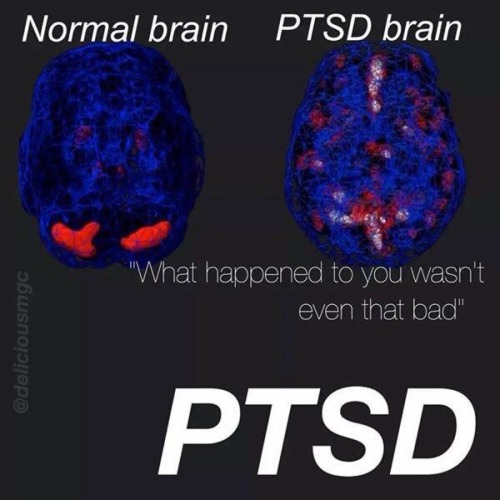7 Things That Happen When You Go To Space
7 Things That Happen When You Go To Space
Told Through Astronaut Scott Kelly’s Tweets
Astronaut Scott Kelly is currently spending a year in space. Most expeditions to the space station last four to six months. By doubling the length of this mission, researchers hope to better understand how the human body reacts and adapts to long-duration spaceflight. During this one-year mission, Kelly is also participating in the Twins Study. While Kelly is in space, his identical twin brother, retired NASA Astronaut Mark Kelly, will participate in a number of comparative genetic studies.
Here are a few things that happen when astronauts go to the space station:
1. Your personal hygiene takes on a different form:


2. Sleeping arrangements might take some getting used to:



3. Internet services will remind you of the 90s:

4. You never have to do laundry:


5. You get to become immersed in a range of different cultures:

6. All of your water is recycled…yes…that means urine too:


7. You get to see the Earth like never before:



Follow Astronaut Scott Kelly’s Year in Space mission on Facebook, Twitter and Instagram.
Make sure to follow us on Tumblr for your regular dose of space: http://nasa.tumblr.com
More Posts from Curiositytherover and Others

Injecting Gases Into The Stratosphere Could Reduce Hurricanes
In an attempt to combat climate change, a multinational team of scientists are studying how shading sulfate aerosols that are dispersed into the stratosphere could help cool the planet and reduce the number of hurricane occurrences. “We’re basically mimicking a volcano and saying we’re going to put 5 billion tons of sulfates a year into the atmosphere 20 kilometers high, and we’ll do that for 50 years,” says John Moore, head of China’s geoengineering research program
Read more at: Injecting Gases Into The Stratosphere Could Reduce Hurricanes

Google uses Pixar’s ‘Inside Out’ to teach girls programming

(Fact Source) Follow Ultrafacts for more facts




Just because you can’t see it doesn’t mean mental illness don’t exist.
www.thebpmag.com

Astronomers Have a New Tool in the Search For Habitable Exoplanets
The quest for habitable alien worlds may get a whole lot easier. http://futurism.com/astronomers-have-a-new-tool-in-the-search-for-habitable-exoplanets/



Scientists find “the holy grail of astronomy” after uncovering a galaxy that is made up of mostly dark matter
Mars will one day have a ring system due to Phobos, the planet’s small moon, being crushed by tidal forces
Blue Origin’s New Shepard rocket successfully launches to the edge of space and lands vertically back on Earth
A new exoplanet called GJ1132b is found 39 light-years away, making it the closest Earth-sized exoplanet ever discovered
Researchers make ultra-thin diamond nanothreads, which could help us build a space elevator
A blue Neptune-like exoplanet, which seems to have skies like Earth, is found orbiting a red dwarf star
A staggering 574 newly discovered massive galaxies are revealed that date back to the beginnings of the universe
New research shows that galaxies were far more efficient at making stars during the first 10% of history than they are now

Astronaut Scott Kelly, who is spending one year on the Space Station, tweeted this image this morning: “#California in a golden state just before sunrise”
via reddit

Kim Goodsell was running along a mountain trail when her left ankle began turning inward, unbidden. A few weeks later she started having trouble lifting her feet properly near the end of her runs, and her toes would scuff the ground. Her back started to ache, and then her joints too.
This was in 2002, and Kim, then 44 years old, was already an accomplished endurance athlete. She cycled, ran, climbed and skied through the Rockies for hours every day, and was a veteran of Ironman triathlons. She’d always been the strong one in her family. When she was four, she would let her teenage uncles stand on her stomach as a party trick. In high school, she was an accomplished gymnast and an ardent cyclist. By college, she was running the equivalent of a half marathon on most days. It wasn’t that she was much of a competitor, exactly – passing someone in a race felt more deflating than energising. Mostly Kim just wanted to be moving.
So when her limbs started glitching, she did what high-level athletes do, what she had always done: she pushed through. But in the summer of 2010, years of gradually worsening symptoms gave way to weeks of spectacular collapse. Kim was about to head to Lake Superior with her husband. They planned to camp, kayak, and disappear from the world for as long as they could catch enough fish to eat. But in the days before their scheduled departure, she could not grip a pen or a fork, much less a paddle. Instead of a lakeside tent, she found herself at the Mayo Clinic in Rochester, Minnesota.
Continue Reading.










Futuristic Weapons: How We Will Fight in the Future
For higher resolution: http://futurism.com/images/futuristic-weapons-how-we-will-fight-in-the-future/
For more cool infographics: http://futurism.com/images/

Why the Brain Makes Mistakes
A study conducted at Carnegie Mellon University investigated the brain’s neural activity during learned behavior and found that the brain makes mistakes because it applies incorrect inner beliefs, or internal models, about how the world works. The research suggests that when the brain makes a mistake, it actually thinks that it is making the correct decision—its neural signals are consistent with its inner beliefs, but not with what is happening in the real world.
The research is in eLife. (full access paywall)
-
 chihuahualovr reblogged this · 1 year ago
chihuahualovr reblogged this · 1 year ago -
 chihuahualovr liked this · 1 year ago
chihuahualovr liked this · 1 year ago -
 epicrates-cenchria reblogged this · 1 year ago
epicrates-cenchria reblogged this · 1 year ago -
 epicrates-cenchria liked this · 1 year ago
epicrates-cenchria liked this · 1 year ago -
 fanartcorvid liked this · 1 year ago
fanartcorvid liked this · 1 year ago -
 mangofeeesh reblogged this · 1 year ago
mangofeeesh reblogged this · 1 year ago -
 masterdreamweaver reblogged this · 1 year ago
masterdreamweaver reblogged this · 1 year ago -
 the-gear-maker reblogged this · 1 year ago
the-gear-maker reblogged this · 1 year ago -
 cannibalistic-impulse liked this · 1 year ago
cannibalistic-impulse liked this · 1 year ago -
 fastofthekillones reblogged this · 1 year ago
fastofthekillones reblogged this · 1 year ago -
 fastofthekillones liked this · 1 year ago
fastofthekillones liked this · 1 year ago -
 profoundlytenaciousgalaxy liked this · 1 year ago
profoundlytenaciousgalaxy liked this · 1 year ago -
 newgraywolf reblogged this · 1 year ago
newgraywolf reblogged this · 1 year ago -
 newgraywolf liked this · 1 year ago
newgraywolf liked this · 1 year ago -
 glaxyjellyfish reblogged this · 1 year ago
glaxyjellyfish reblogged this · 1 year ago -
 littleroma reblogged this · 2 years ago
littleroma reblogged this · 2 years ago -
 littleroma liked this · 2 years ago
littleroma liked this · 2 years ago -
 royallylazy liked this · 5 years ago
royallylazy liked this · 5 years ago -
 bertisanijes liked this · 5 years ago
bertisanijes liked this · 5 years ago -
 yutaki liked this · 5 years ago
yutaki liked this · 5 years ago -
 cactus-pony reblogged this · 5 years ago
cactus-pony reblogged this · 5 years ago -
 cactus-pony liked this · 5 years ago
cactus-pony liked this · 5 years ago -
 anastasiavenus liked this · 5 years ago
anastasiavenus liked this · 5 years ago -
 bertisanijes reblogged this · 5 years ago
bertisanijes reblogged this · 5 years ago -
 chloe-the-fool liked this · 5 years ago
chloe-the-fool liked this · 5 years ago -
 animadartista liked this · 5 years ago
animadartista liked this · 5 years ago -
 vvhenan liked this · 5 years ago
vvhenan liked this · 5 years ago -
 degari reblogged this · 5 years ago
degari reblogged this · 5 years ago -
 dreamnghrt reblogged this · 6 years ago
dreamnghrt reblogged this · 6 years ago -
 whatamitooyou liked this · 7 years ago
whatamitooyou liked this · 7 years ago -
 k-zay liked this · 7 years ago
k-zay liked this · 7 years ago -
 enement liked this · 7 years ago
enement liked this · 7 years ago -
 spektrale-eulen reblogged this · 7 years ago
spektrale-eulen reblogged this · 7 years ago -
 shalastars reblogged this · 7 years ago
shalastars reblogged this · 7 years ago -
 moyurukoda reblogged this · 7 years ago
moyurukoda reblogged this · 7 years ago -
 aviolinstruggle reblogged this · 7 years ago
aviolinstruggle reblogged this · 7 years ago -
 necessarilyunprecedented reblogged this · 7 years ago
necessarilyunprecedented reblogged this · 7 years ago -
 codedsymphony liked this · 7 years ago
codedsymphony liked this · 7 years ago -
 hella-strange reblogged this · 8 years ago
hella-strange reblogged this · 8 years ago -
 hella-strange liked this · 8 years ago
hella-strange liked this · 8 years ago -
 pakofetuko915340-blog liked this · 8 years ago
pakofetuko915340-blog liked this · 8 years ago -
 superowlsareahoot liked this · 8 years ago
superowlsareahoot liked this · 8 years ago -
 andromesia liked this · 8 years ago
andromesia liked this · 8 years ago -
 ravenlotz reblogged this · 8 years ago
ravenlotz reblogged this · 8 years ago